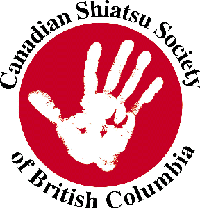




| Home | About Us | About Shiatsu | Education | Directory | FAQ | Conference |
Shiatsu
Society of
British
Columbia
|
Q1) How many styles of Shiatsu are in Japan? A) There is one style of
Shiatsu in
Japan which came under regulation by
the Ministry of Health of Japan in 1964. In Japan, just as
acupuncturists
and doctors do, the Shiatsu practitioner must pass a government
examination
to be licensed. To qualify to write this exam, the candidate must be a
graduate of an accredited college. In other words, all Shiatsu
practitioners must have an equivalent level of education. Similarly, in
Canada, for instance, all qualified chiropractors have same level of
education. As there are currently no regulations governing Shiatsu in
Canada, the CSSBC has established its own guidelines based on the
Japanese
regulations and definitions.
A) Yes. Currently, Shiatsu is not regulated in any province in Canada. However, any health related profession must have knowledge of medical foundations. 2000 hours of education should be a minimum requirement including foundation based on Anatomy, Physiology and Pathology. We should have educational levels which are at least equivalent to other recognized health professionals. (see below) Educational requirements for Shiatsu and other recognized health related professions in Canada except for medial doctors.
Some people say that Shiatsu is an Eastern therapy. Whether it is
Eastern or
Western, knowledge of Anatomy, Physiology and Pathology is important
and
should comprise one third or more of the 2000 hour curriculum. i.e. 700
to
800 hours. The CSSBC is trying to popularize the original Shiatsu which
is
defined by the Ministry of Health of Japan. One of the purposes of the
CSSBC is to promote the establishment of official regulations in
Canada.
When we apply for approval of the Federal and Provincial Ministries of
Health, we must have a 2000 hour curriculum. This is why we strongly
recommend a 2000 hour course as an international standard for Shiatsu
education.
A) No. In 1912, when Namikoshi
Sensei, the founder of Shiatsu, was seven
years old, he cured his mother's rheumatism pressing his mother's body
using only his fingers, thumbs and palms. He went on to study and
established a theory based on an anatomical and physiological
understanding
of the body.
A) Shiatsupractor is an
internationally recognized title given to those
who have the appropriate education. "Shiatsupractor" is a registered
trade mark belonging to the International Shiatsu Association.
In Canada, this title is granted to CSSBC members in BC and members of
the
Shiatsu Diffusion Society in Ontario. In areas where there are no
government regulations for Shiatsu, this title indicates that the
Shiatsu
Practitioner practices the original Shiatsu defined by the Ministry of
Health of Japan.
A) There are many Shiatsu
workshops
held in Japan. These workshops are mostly organized by graduate
students from the Japan Shiatsu College, who learned Shiatsu directly
from Tokujiro Namikoshi sensei. In some cases, the workshops become
very popular not only in Japan but throughout the world. A good example
is the Zen-Shiatsu created by the late Shizuto Masunaga sensei. The
techniques taught at the workshops, however, are not recognized as
Shiatsu Treatment according to government regulations. Consequently, if
a person only has a certificate from attending a workshop, s/he is not
eligible to take the government examination to become a professional
Shiatsu Practitioner. These techniques are called "Derivative Shiatsu"
to distinguish them from the original Shiatsu taught at the school that
is registered with the Ministry of Health of Japan. |
||||||||||||||||||||||||||||||||||||||||||